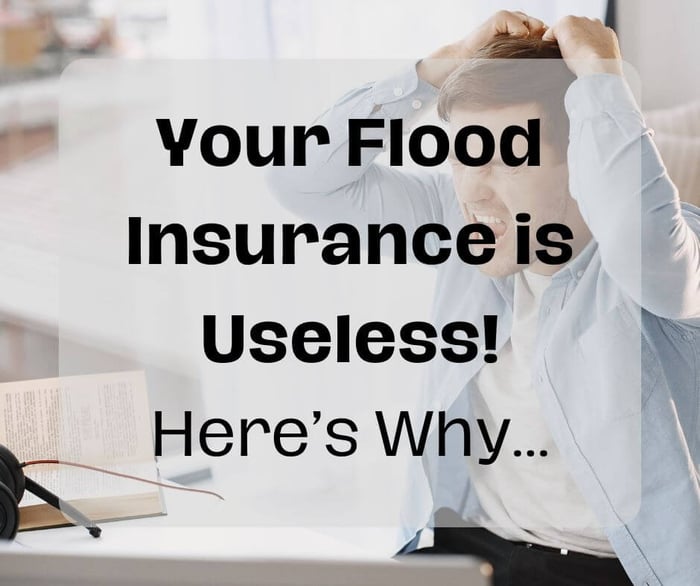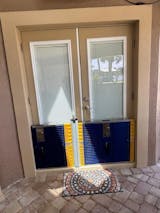Australia is no stranger to extreme weather, and for many of us, the threat of floods is a very real concern. Whether you live in a coastal region, near a river, or in areas prone to flash flooding, it’s crucial to have flood insurance in place to protect your property and belongings. However, many Australian property owners are shocked to find out that their flood insurance policy may not cover everything when disaster strikes.
In this article, we’ll dive into the common exclusions in flood insurance policies in Australia, give you advice on how to ensure adequate coverage, and highlight ways you can better protect your property using additional measures like flood barriers. By the end, you'll have a clearer understanding of what’s covered, what’s not, and how to get the protection you need.
What is Flood Insurance?
Before we get into exclusions, let's quickly define what flood insurance covers. Flood insurance is designed to cover damage caused by floods, such as rising water levels or overflowing rivers, rainwater surges, and even stormwater runoff. The purpose of flood insurance is to give you financial protection in the event of severe flooding, which can lead to expensive repairs, property loss, and disruption to your home or business.
However, while flood insurance offers significant protection, it doesn’t cover everything. Understanding these exclusions is crucial to making sure you’re not left high and dry when the floods hit.
Common Flood Insurance Exclusions in Australia
Flood Damage to Uninsurable Areas
Flood insurance policies often come with exclusions related to specific areas of the property. For example, some insurers may exclude damage to areas that are typically deemed "uninsurable" due to their location or vulnerability to flooding, like basements or underground structures.
Pro Tip: If you have a basement or underground garage, be aware that these areas may not be covered by your policy. Consider additional waterproofing measures, such as flood barriers or sump pumps, to protect these spaces.
Flooding Caused by Inadequate Maintenance
Damage caused by flooding due to poor maintenance or lack of proper flood prevention measures can often be excluded. If, for example, your gutters are blocked, or your stormwater drains are not regularly cleared, insurers might argue that the flooding could have been prevented with proper upkeep.
Pro Tip: Regularly maintain your property’s drainage system. Clear your gutters, drains, and downpipes to reduce the risk of flooding caused by poor maintenance. Installing flood barriers around vulnerable entry points can also help to safeguard against rising water levels.
Flood Damage from Negligence
Another common exclusion is flood damage resulting from negligence or lack of care. If you’ve failed to take reasonable steps to protect your property from floodwaters, such as leaving doors or windows open during a storm or not fixing leaks in your roof, your insurer may refuse your claim.
Pro Tip: Keep your property in good condition and take precautions during heavy rain or storm warnings. Install storm shutters and seal any cracks in walls or windows to minimise water intrusion.

Flood Damage to Temporary Structures
Temporary structures such as caravans, tents, and portable buildings may not be covered by flood insurance policies. These types of structures are often considered at a higher risk for flood damage, so many insurers will exclude them from coverage.
Pro Tip: If you have a temporary structure on your property, check your policy to ensure it's covered. For structures that aren’t, consider moving them to higher ground or securing them with waterproofing solutions like tarps.
Damage to Landscaping and Gardens
While flood insurance usually covers the structural damage to your home, it often doesn’t cover landscaping, plants, gardens, and outdoor structures like fences or garden sheds. Flooding can cause significant damage to outdoor areas, but unless your policy specifically includes them, you may not be reimbursed for these losses.
Pro Tip: Consider adding coverage for landscaping if it’s available under your insurance plan. Alternatively, take preventative measures such as elevating garden beds, planting flood-resistant plants, or creating barriers to protect valuable outdoor features.
Sewerage and Drainage Issues
Some flood insurance policies don’t cover water damage caused by issues with sewerage or stormwater systems that aren’t directly related to natural flood events. If your pipes or drains are clogged, broken, or poorly maintained, flooding caused by these issues may not be covered.
Pro Tip: Regularly check and maintain your sewage and drainage systems to ensure they are functioning properly. Installing a sump pump or a backflow valve could help prevent internal flooding caused by plumbing failures.
Exclusions for Areas With High Flood Risk
In some cases, insurers may refuse to offer flood coverage for properties located in areas with a high flood risk, such as those in flood zones or near bodies of water that regularly overflow. If you’re living in an area that is considered a high-risk flood zone, you may find it difficult to get comprehensive flood insurance coverage.
Pro Tip: If you live in a high-risk area, consider speaking with your insurance provider to explore additional flood coverage options or floodproofing strategies. You might also want to invest in flood barriers or other protective measures to reduce the risk of damage.
Flood Damage from River or Creek Overflow
Some insurers may exclude damage caused by river or creek overflow if the flooding event wasn’t a direct result of natural weather events such as a storm or heavy rainfall. This could be an issue if your property is near a river or creek that regularly overflows during certain seasons.
Pro Tip: If you live near a river or creek, install physical barriers like flood walls or temporary flood barriers to prevent water from reaching your property during high-risk times.
How to Ensure Adequate Flood Coverage
Now that you understand the common exclusions in flood insurance policies, it’s essential to ensure you have adequate coverage for your property. Here are some tips to help you secure the protection you need:
Review Your Policy
Always read the fine print of your flood insurance policy to understand what is and isn’t covered. Speak to your insurance provider if you're unsure about exclusions and ask about optional coverage add-ons for specific risks, such as landscaping or temporary structures.
Upgrade Your Coverage
If you're in a flood-prone area, consider opting for an upgraded policy that offers broader coverage. For example, many insurers offer additional protection for landscaping, temporary structures, and water damage caused by faulty drainage systems.
Invest in Flood Barriers
Flood barriers, such as those offered by Dam Easy, can help reduce the risk of flood damage by protecting entry points, doors, and windows from rising water. These barriers are especially effective for homes and businesses in areas prone to flash floods or coastal flooding.
El dique de contención de inundaciones.

€779,00
Dam easy® para evitar la inundación de la represa. Las inundaciones son cada vez más frecuentes en todo el mundo.Lo que solía ser un fenómeno centenario se ha convertido en una tendencia estacional que los propietarios deben afrontar. … Read More
Flood-Proof Your Property
Beyond insurance, it’s essential to flood-proof your property to minimise the risk of water damage. Elevate electrical appliances, seal cracks in walls, and install sump pumps or backflow valves to reduce the impact of flooding. If possible, use flood barriers around vulnerable areas.
Maintain Your Property
Regular maintenance is key to preventing flood damage. Keep gutters, drains, and stormwater systems clear of debris, fix leaks, and inspect your property regularly for signs of wear and tear that could increase flood risk.
Conclusion
Flood insurance is an essential tool for protecting your property from water damage, but it’s crucial to understand the exclusions in your policy. By taking proactive steps to flood-proof your home and ensuring your coverage is adequate, you can avoid nasty surprises when the next big storm hits.
If you live in a flood-prone area, consider investing in flood barriers like those from Dam Easy to provide an additional layer of protection. These simple yet effective barriers can help keep floodwaters at bay, giving you peace of mind during flood season.
Remember, being prepared is the key to reducing the impact of floods on your property, your business, and your life. Don't wait for the floods to arrive—act now to ensure your property is properly protected.



















